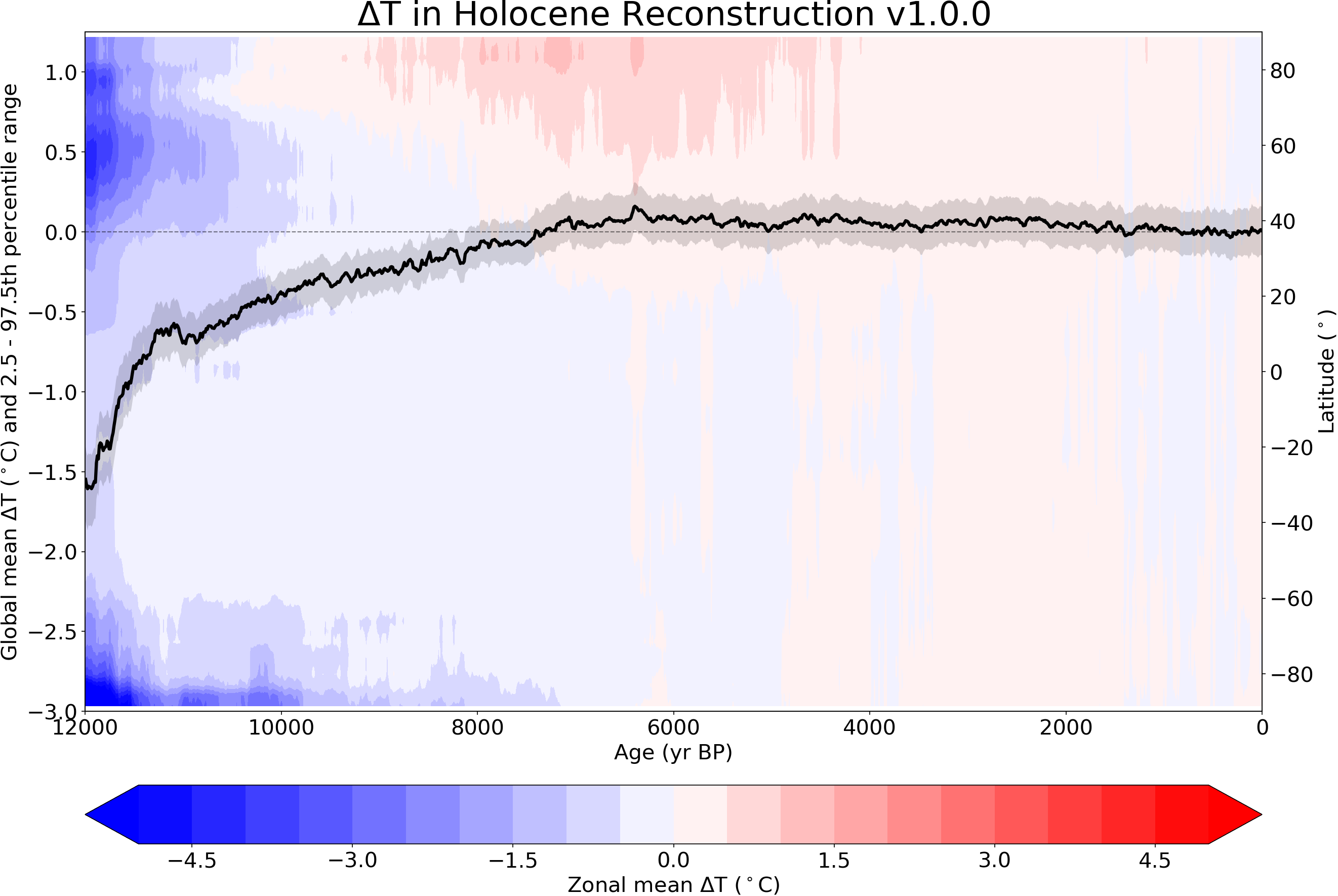The Holocene and LGM
Welcome to the Holocene and LGM
The Holocene is a geologic epoch spanning the last 11,700 years. After the end of the last glacial period, temperatures rose to values near the present day. The Holocene is well-sampled by a variety of proxy records: lake and ocean sediments, peat, ice cores, and more. The Last Glacial Maximum (LGM) occurred around 21,000 years ago.
Three reconstructions that cover this period are the Holocene Reconstruction, Last Glacial Maximum reanalysis (LGMR), and the Temperature 12k composites. The Holocene Reconstruction and LGMR use paleoclimate data assimilation while the Temperature 12k composites use a variety of proxy-only compositing methods.
To the right: See overview figures of these reconstructions.
Below: Open the visualizer to explore maps and time series. See the published papers to learn more about methodology and results, or browse the data and code.

Reconstructed temperature - global mean (line, with shading for 95% ensemble range) and zonal mean (colors) relative to 0-1 ka.

Holocene Reconstruction
The Holocene Reconstruction uses a data assimilation method to combine information from proxies and models. Proxies provide point data while model covariances infer unknown data based on available data. The result is a spatially complete temperature reconstruction. Proxies used: Temperature 12k proxy database, version 1.0.2 (browse at LiPDverse). Models used: TraCE-21ka and a HadCM3 transient deglacial simulation.
Visualizer Paper Data Code
Last Glacial Maximum reanalysis
The Last Glacial Maximum reanalysis (LGMR) is another data assimilation approach, combining proxy data with information from model simulations, covering the past 24,000 years. Spatially complete air temperature and δ18O reconstructions can be browsed here, while sea surface temperature reconstructions are also available at the "data" link below. Proxies used: 539 records from ocean sediment cores (proxies: δ18O, Uk'37, Mg/Ca, and Tex86). Model used: Isotope enabled simulations from the iCESM model.
Visualizer Paper Data Code
Temperature 12k composites
The Temperature 12k composites use five different proxy-only compositing techniques to compute temperature composites for 30° latitudinal bands and the global mean. Proxies used: Temperature 12k proxy database, version 1.0.2 (browse at LiPDverse). Methods used: Standard calibrated composite (SCC), dynamic calibrated composite (DCC), composite plus scale (CPS), pairwise comparison (PAI), and generalized additive model (GAM).
Visualizer Paper Data Code
Holocene Hydroclimate composites
The Holocene Hydroclimate composites are a set of regional composites of hydroclimate data, using the IPCC AR6 regions. Composites are given as a relative z-score, where positive values are wetter and negative values are drier. Proxies used: Holocene Hydroclimate database, version 0.7.0 (browse at LiPDverse).
Visualizer Paper Data
